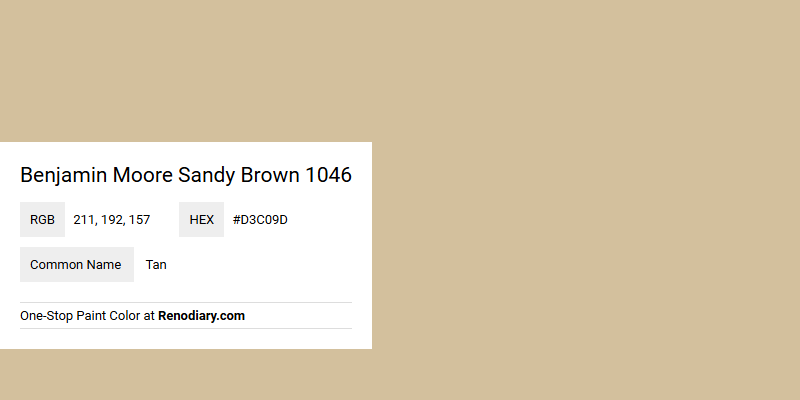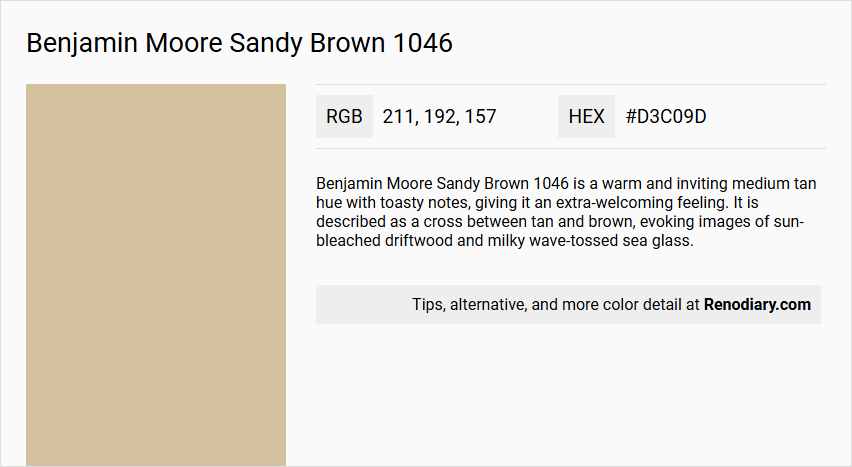
Benjamin Moore Sandy Brown 1046 is a versatile paint shade that designers often refer to as Tan, characterized by its gentle, earthy undertones. With an RGB composition of 211, 192, 157, it strikes a perfect balance between warmth and neutrality, making it an ideal choice for creating a cozy and inviting atmosphere. This color not only complements a variety of interior styles but also pairs beautifully with both bright and muted accent colors, enhancing the overall aesthetic of a space.
Color Description
Benjamin Moore Sandy Brown 1046 is a warm and inviting medium tan hue with toasty notes, giving it an extra-welcoming feeling. It is described as a cross between tan and brown, evoking images of sun-bleached driftwood and milky wave-tossed sea glass.
Undertones
The undertone of Sandy Brown 1046 can be accurately described as a Red hue. This is determined by isolating the pure hue and eliminating any tints, tones, and shades.
Color Values
- HEX: #D3C09D
- RGB: 211, 192, 157
- LRV (Light Reflectance Value): Approximately 52.29 to 54 (medium light category)
Usage
Sandy Brown 1046 is versatile and can be used as either an accent or the main wall color. It pairs harmoniously with soft creams, muted greens, crisp whites, and deep blues, making it suitable for a range of design styles from rustic to modern.
Atmosphere
This color creates a soothing and natural ambiance, contributing to a cozy and chic interior. Its medium LRV helps balance the space between feeling spacious and airy or intimate and welcoming.
Benjamin Moore Sandy Brown 1046 Color Alternative
Benjamin Moore Sandy Brown 1046 offers a warm and inviting tone that makes it a popular choice for adding a touch of elegance to any space. For those considering alternatives, Tikkurila Playa X395, Tikkurila Expance X394, and Little Greene Clay 39 provide similar earthy and refined qualities while delivering their unique appeal. Each of these color alternatives captures the essence of a balanced, natural palette, making it easy to adapt the overall design to suit a variety of styles.
Bathroom
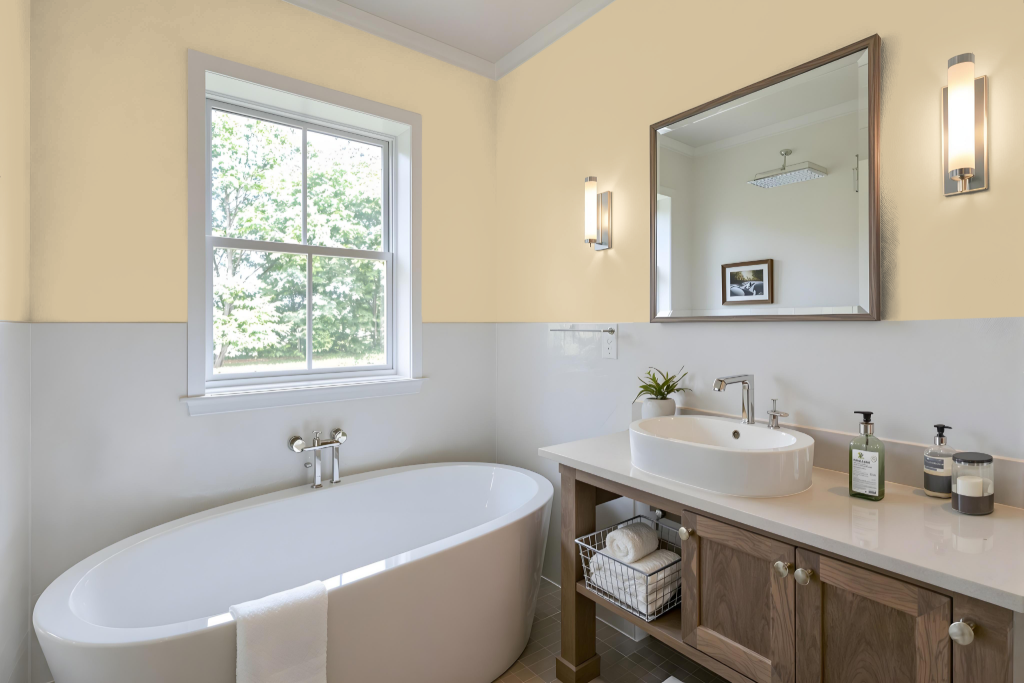
Benjamin Moore’s Sandy Brown 1046 makes an excellent choice for a bathroom, offering a warm and inviting atmosphere that complements high-humidity environments. To maximize durability and ease of cleaning, a pearl or satin finish is recommended as it creates a smooth, less porous surface that helps resist moisture.
For outstanding performance and color longevity, options such as Aura or Regal Select provide impressive fade resistance and robust hide, even with regular washing. In addition, carefully calculating the paint needed—by measuring wall dimensions, subtracting door spaces, and considering coverage for two coats—ensures the project is completed efficiently and effectively.
Bedroom
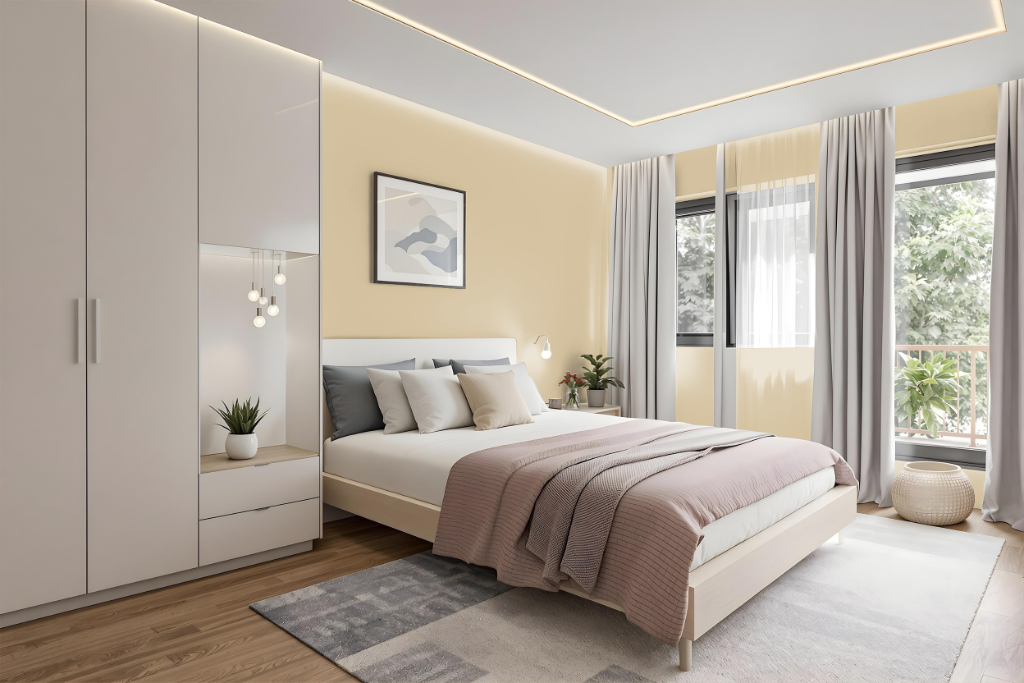
In the bedroom, Sandy Brown offers a warm and inviting base that sets the tone for a sophisticated and harmonious retreat. Paired with lighter shades like Shelburne Buff or Oat Straw and enriched with deeper hues such as Porter Ridge Tan or Summerdale Gold, the color creates a cohesive monochromatic palette that enhances the overall ambiance.
For those seeking a more dynamic visual impact, Sandy Brown can also be integrated with cooler tones such as blues reminiscent of Normandy or Feather Gray, resulting in a vibrant atmosphere. Additionally, neutral accents like Chantilly Lace, Vapor, or Wood Ash balance Sandy Brown's inherent warmth, ensuring a well-rounded and engaging decor scheme.
Kitchen
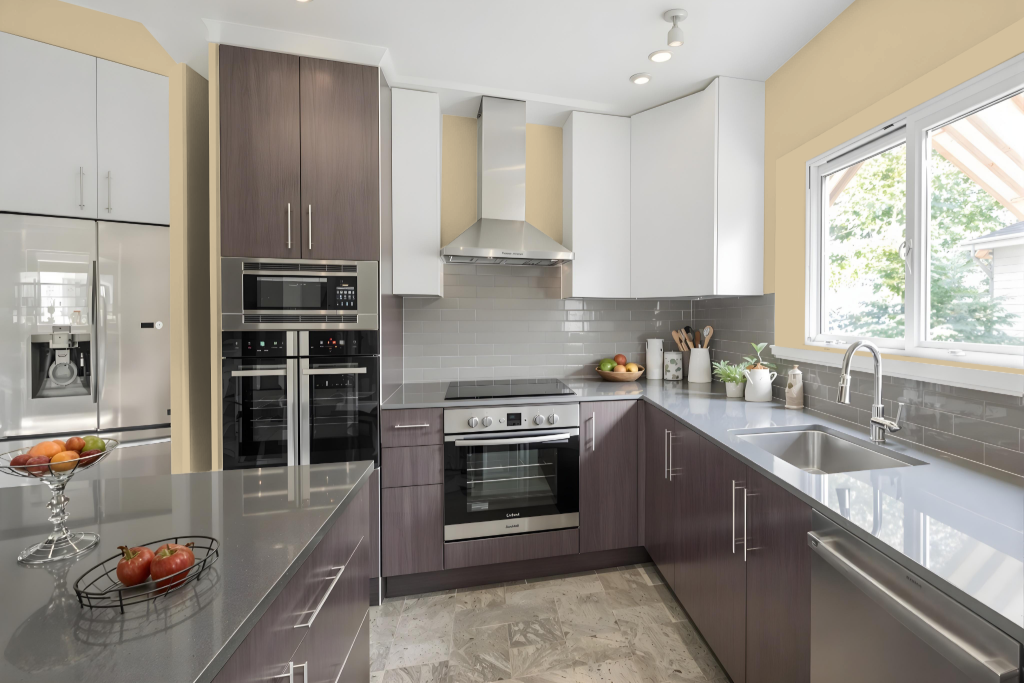
For a kitchen color scheme, Benjamin Moore's Sandy Brown offers an appealing option that brings a warm, inviting atmosphere. It pairs harmoniously with crisp white accents for cabinetry and trim, while deeper hues such as blues or greens provide striking contrasts that refresh the space.
For a subtler approach, lighter shades like Steam or Wood Ash can be used on baseboards or ceilings to maintain an airy feel. Incorporating natural elements such as wood and stone further enhances the overall warmth, yielding a cohesive design that exudes both comfort and style.
Living Room
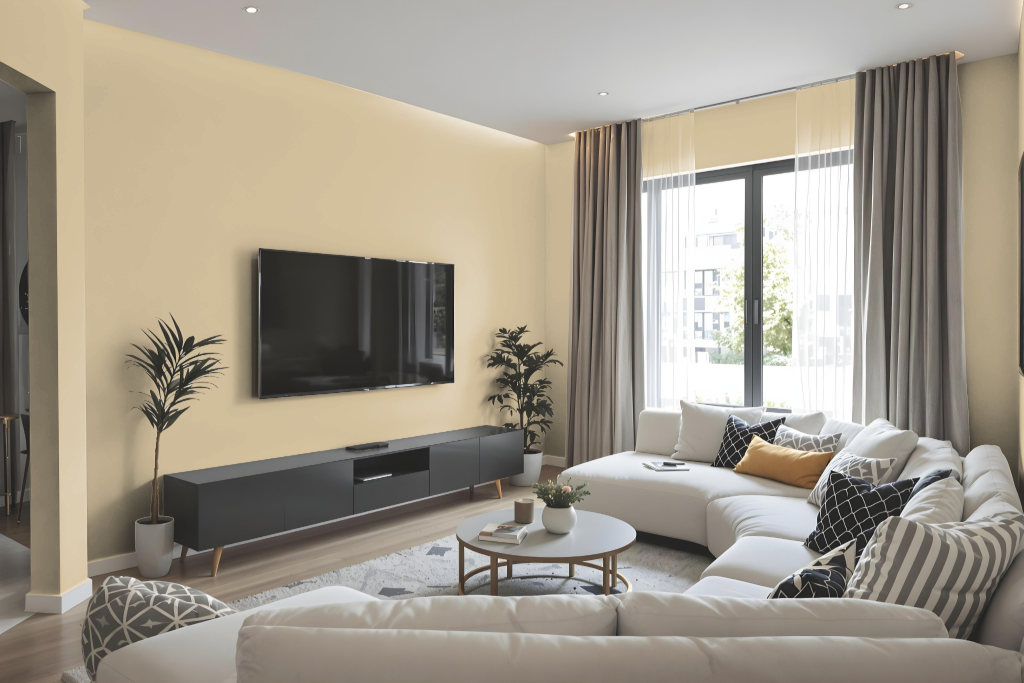
Living room color Benjamin Moore Sandy Brown 1046 introduces a warm and welcoming ambiance that enhances the space with its natural feel. It pairs beautifully with soft creams and muted greens to create a soothing atmosphere, while also working well alongside crisp whites and deep blues for a balanced interior design.
Suitable for both main wall applications and accent features, this inviting hue adapts seamlessly to various design styles, ranging from rustic to modern. It coordinates harmoniously with complementary choices such as Chantilly Lace, Vapor, and Wood Ash, and echoes similar shades like Blanched Almond and Squire Hill Buff, making it a flexible choice for diverse lighting conditions.
Outdoor
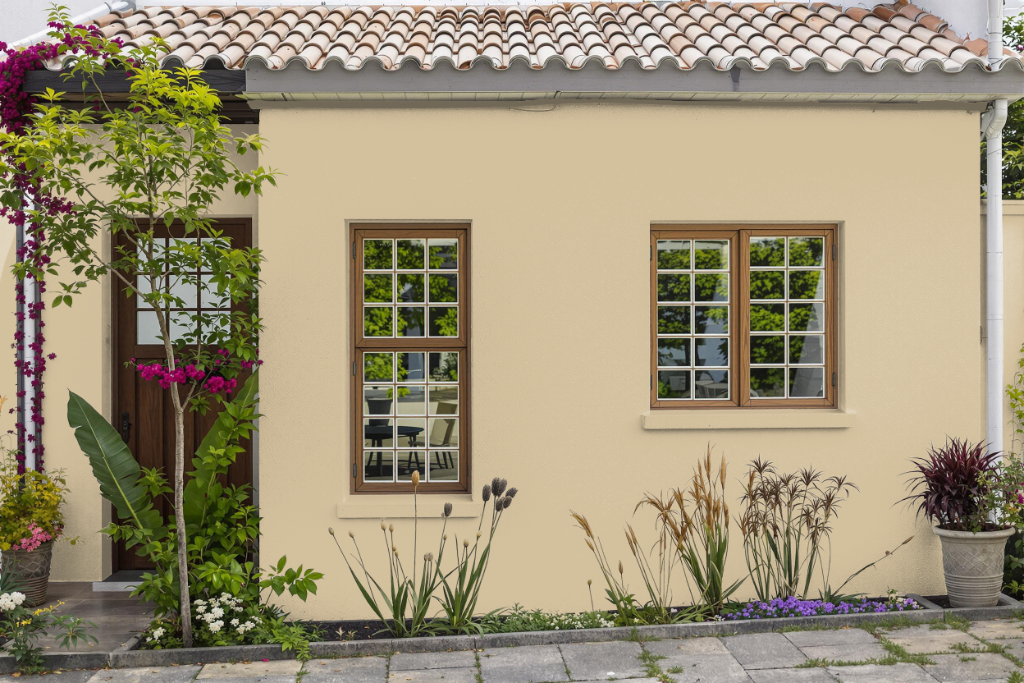
For home outdoor color, Benjamin Moore Sandy Brown brings a warm, inviting presence to your home's exterior. This refined shade extends its appeal from interior decor to outdoor applications when paired with formulations specifically engineered for exterior conditions.
To ensure lasting beauty and protection, choose a paint designed for outdoor use that incorporates advanced technology for durability and resistance against weather challenges. Various finishes allow you to select an option that meets your project's requirements, providing both aesthetic charm and long-term performance.
